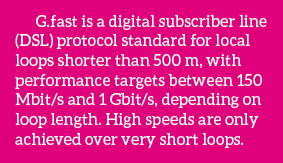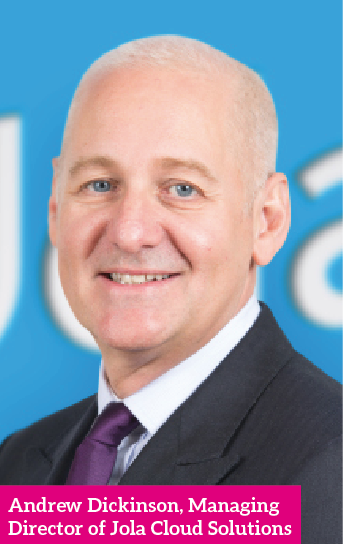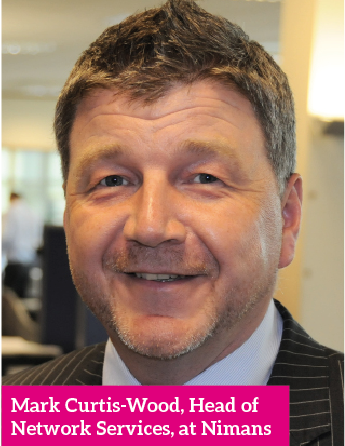
Life is full of compromises. We all want super-fast access but don’t really want to pay too much for it. Fibre is the answer to superfast but it is expensive for the telco to get it directly to your home or office. On the other hand, there’s plenty of copper in the ground but there’s always been a throttle issue on the upper speed that can be achieved using that medium.
Continuously in the history for data communications however that upper limit on bit rate has been stretched by new technology and the immanent introduction by BT of G.Fast is the latest iteration of that stretch and proof that there’s still life in copper.
According to BT CEO Gavin Patterson, “G.Fast is an important technology that will enable us to deploy ultrafast broadband at pace and to as many homes as possible. Customers want their broadband to be affordable as well as fast and we will be able to do that using G.Fast.
FTTP will also play a bigger role going forward and I believe it is particularly well suited to those businesses who may need speeds of up to 1Gbps. My ambition is to roll it out to two million premises and our trials give me confidence we will.”
The company’s existing superfast broadband rollout is expected to reach 95 percent coverage by 2017 and BT said it is looking at ways of connecting the final five percent. The Openreach fibre network currently covers 25 million premises, of which 6 million take superfast services.
So is G.Fast going to be a cost effective game changer?
According to Paul Heritage-Redpath, Product Manager at Entanet, Openreach has positioned G.Fast as an additional option in their portfolio that will meet the needs of customers that want higher bandwidth and an improved customer experience.
 “They say that it has the potential for speeds of 500Mbps in the aggregate and BT is currently developing a plan that will allow them to deploy G.Fast to 10 million premises by 2020. Sounds great, but is there any substance behind the headlines?
“They say that it has the potential for speeds of 500Mbps in the aggregate and BT is currently developing a plan that will allow them to deploy G.Fast to 10 million premises by 2020. Sounds great, but is there any substance behind the headlines?
“Our view is that we need to take the claims regarding G.Fast with a pinch of salt as the realities of download and upload speeds will be far less than those promoted. As an enhanced FTTC product, it will be subject to the same issues that come hand-in-hand with both FTTP and FTTC services. In addition to running on a contended backhaul, speeds will also vary according to loop length. This means that almost no-one will achieve the speeds that have been reached under lab conditions - where the DSLM was at the user end with very little copper involved - versus the real-world implementation where the distance between the premise and the cabinet has a significant effect on what is possible. And when you consider that the speeds quoted are “in the aggregate”, it seems that BT are really trying to embellish the facts. Although we concede that “500Mbps in the aggregate” does sound a lot better than “up to 500Mbps minus whatever the upstream is, depending on the loop length”.
We can’t see G.Fast having much of an impact on channel resellers in 2017. At the time of writing, Openreach has proven that the technology can receive a signal but it is still conducting their limited trial pilots to ‘test deployment technology capabilities and capture learning’. Once this phase has been completed, BT Wholesale and comms providers will need to build their systems on top of the Openreach infrastructure to actually create the products that will be made available for sale. With this in mind, we can’t see G.Fast becoming part of channel business strategies until 2018 at best.
 We also wonder if G.Fast will be as economically viable as BT hopes. Taking our learnings around FTTP into consideration, we foresee that the full value of G.Fast won’t be realised, especially in the business market. Like FTTC, it’s the contended backhaul and lack of SLA that will mean that businesses will be more likely to opt for fibre or EFM over G.Fast. This is because ISPs pay for bandwidth by the Mbps and this cost is passed onto the consumer in some form, so when businesses are given the option of a product that is uncontended and comes with an SLA for a price comparable to one that is contended and has no SLA, it becomes a bit of a no-brainer.”
We also wonder if G.Fast will be as economically viable as BT hopes. Taking our learnings around FTTP into consideration, we foresee that the full value of G.Fast won’t be realised, especially in the business market. Like FTTC, it’s the contended backhaul and lack of SLA that will mean that businesses will be more likely to opt for fibre or EFM over G.Fast. This is because ISPs pay for bandwidth by the Mbps and this cost is passed onto the consumer in some form, so when businesses are given the option of a product that is uncontended and comes with an SLA for a price comparable to one that is contended and has no SLA, it becomes a bit of a no-brainer.”
Clayton Nash, Head of Products at CityFibre
G.fast is just another sticking plaster on a coupe network with its best days long-since passed. It’s an acceptable short term solution in the places where it’s going to be available. But that’s just a small part of the country and it’s the same part that’s already served with the fastest broadband speeds today.
G.fast doesn’t get us anywhere near the gigabit speeds needed to support today’s aspiring business community and that’s why it can never be a true game changer. The money that’s been used to research, develop and now deploy it, would’ve been more cost-effectively spent investing in a modern, pure fibre infrastructure that’s genuinely fit for the future.
Anywhere in the world where there’s fibre in the ground, it beats G.fast. It may be a short term solution for some people – but ultimately there is no getting away from the fact that fibre is what’s really needed and anything less is merely postponing the inevitable bottlenecks – at which point they’ll be even more crippling for businesses than they are today.
Is DSL dead in the water for business?
Clayton Nash, Head of Products at CityFibre says that in the same way that fax machines still had a place in some business operations long after email arrived, DSL will continue to have a role to play – but only for those who can’t get access to or genuinely don’t need anything faster. For everyone else it’s already a limiting technology.
“The ITU, recently stated that 20Mb/s high-speed broadband should be made universally available at an affordable price by 2020. 20Mb/s is ok for many of today’s households but, by 2020, it’ll be nowhere near enough. And this is just households. Many SMEs already need services that deliver closer to 1Gb/s.
To see why this is true you only need to look at how much intelligence and computing power now sits in the cloud – for even the smallest business. NFV and SDN technology is putting network intelligence, security and management software in the cloud too. While these technologies save businesses from having to shell out on expensive routers, switches, firewalls etc., they also contribute to the need for increasingly fast, reliable connectivity.
 The outage risks associated with any use of copper in a network is making robust, pure fibre connections more important than ever for businesses large and small.
The outage risks associated with any use of copper in a network is making robust, pure fibre connections more important than ever for businesses large and small.
DSL is simply not fit for the future of businesses in the UK, and if we don’t drive for better, we’ll be limiting opportunities to succeed today and failing the next generation by holding back our whole country’s potential for economic growth.”
Paul Heritage-Redpath at Entanet wholeheartedly dismisses the notion that DSL is dead in the water.
“The advancements in DSL technology have meant that more and more businesses can use a broadband connection to access systems, share files and function online, while coverage continues to improve on an almost daily basis. What’s more, it’s at the right price point, ensuring that SMEs are able to do more with their business online without it costing them a fortune. We believe that this upward trend in business use of DSL services is only going to improve as a result of the 10Mbps Universal Service Obligation on the horizon. Of course, DSL also remains a relevant and viable option for larger businesses looking to provide failover solutions for their Ethernet solutions.
The key to a good experience as a business customer (of any size) however, is making sure that the provider of the DSL circuit has the right infrastructure to be able to deliver business-grade broadband. Buying a consumer product with a business label on it - as is usually the case with easily recognised connectivity brands - isn’t going to result in a good customer experience. Instead businesses need to select the right product supplied by the right provider, which will be one with their own network and capacity to meet demand. This can only truly be achieved by seeking the professional help of channel resellers.”
What about Ethernet protocol presentation and fibre delivery options?
Andrew Dickinson, Managing Director of Jola Cloud Solutions, says that overall the improvement in the quality and business SLAs for DSL has kept demand high in areas where FTTC is not available.
“Although Ethernet leased line prices have come down a lot in the last few years they are still out of reach of the vast majority of SMEs, who with fewer than 20 employees, are happy if they can upgrade to Fibre Broadband. One disappointment has been in the take up of EoFTTC. Volumes are low because the customer experience of most Fibre Broadband is that it is reliable and uncongested. EoFTTC is symmetrical and uncontended but is often five times the monthly rental of FTTC.
Regardless of how it is delivered the cost per Mbs of internet connectivity continues to fall as reliability and service guarantees continue to improve. Where good quality internet connectivity is available, cloud adoption for a variety of business applications is extremely high, led by hosted voice which is now the first choice telephony option for most SMEs.”
Clayton Nash, at CityFibre believes that the emergence of alternative network infrastructure providers are enriching the fibre options available today, as well as opening the door to ongoing innovation and putting power in the hands of those closest to the end customer.
“Our products currently range from lit services that bridge the quality and price chasm between business broadband and leased lines, to wholesale dark fibre that offers tech-savvy providers the freedom to develop innovative, differentiated services.
Whichever is chosen though, providers get to set themselves free from reselling the like-for-like services sourced primarily from their largest competitor.”
“The first thing to mention here is that fibre doesn’t always mean fibre,” says Paul Heritage-Redpath at Entanet. “There are products that run exclusively on fibre-optic cables, but there are also products that don’t but are marketed as fibre.
The only true fibre option is Fibre to the Premises (FTTP), which is currently available to 323,000 premises, although only 30,000 users have actually signed up. On paper FTTP seems like an ideal solution for users wanting to improve the speeds they experience. But given that it operates on the same contended backhaul as other DSL-based technologies (and consequently speeds cannot be guaranteed) and it doesn’t have a Service Level Agreement, it’s audience may remain limited.”
Mark Curtis-Wood, Head of Network Services, at Nimans, says the roll out of fibre is better than it’s ever been as more players enter the market.
“Vodafone has now entered the market for example. More providers mean fibre access is becoming more readily available with more competition. However, as a nation we are still behind where we should be. Compared to Northern Ireland that has had nearly 100% roll-out, there are still some areas of the mainland that do not have fibre at all. Better fibre options are becoming available and that choice will grow.”
What About Ethernet?
Mark Curtis-Wood says Ethernet is becoming much more commoditised with 100 MB circuits more commonplace.
“More and more businesses are taking 100 MB and 1GB bearers to future proof their businesses even if at the moment they don’t need that circuit capacity. The price point has come down which inevitably has made it more attractive to more businesses. But as the price gets squeezed and the margins reduce it becomes harder to maintain great service levels which can leave a commercial risk.”
Clayton Nash at CityFibre points out that although traditional point to point Ethernet continues to have its place, you no longer need to buy this type of Ethernet solution to get gigabit speeds, high reliability or fast repair guarantees.
“Take for example our gigabit capable Ethernet based metro products. They offer symmetrical speeds, exceptionally low contention, 99.9% network reliability and enterprise grade repair services – all for a fraction of the cost of a dedicated leased lines or EFM solutions. They’re setting new expectations in the market and those businesses that’ve already had a taste of them aren’t looking back.
Modern network build is making traditional point to point Ethernet services more affordable too. When bandwidth becomes abundant (as it is across capacity rich, modern-built networks), the need to manage it as a ‘scarce resource’ is eliminated. As well as removing associated bandwidth management costs, Ethernet can be allowed to run at its native speeds. You only need to look at how much more is being delivered for less by those who are already embracing dark fibre.”
Ed Says… The cost of access speed continues to fall as the availability of even higher speed services continues to hit the market. Hmmmm. This market is reminding me so much of the PC and TV markets. As the PC/TV you always wanted gradually becomes affordable someone brings out a better, more featured product that you crave but can’t afford and the issue becomes one of simply when to get the product you can actually cost justify. Except… the demand for better access is driven by a business need to improve processes rather that a desire to watch Game of Thrones in 4K. So, users should see access as an investment, albeit one with a relatively short shelf life?
